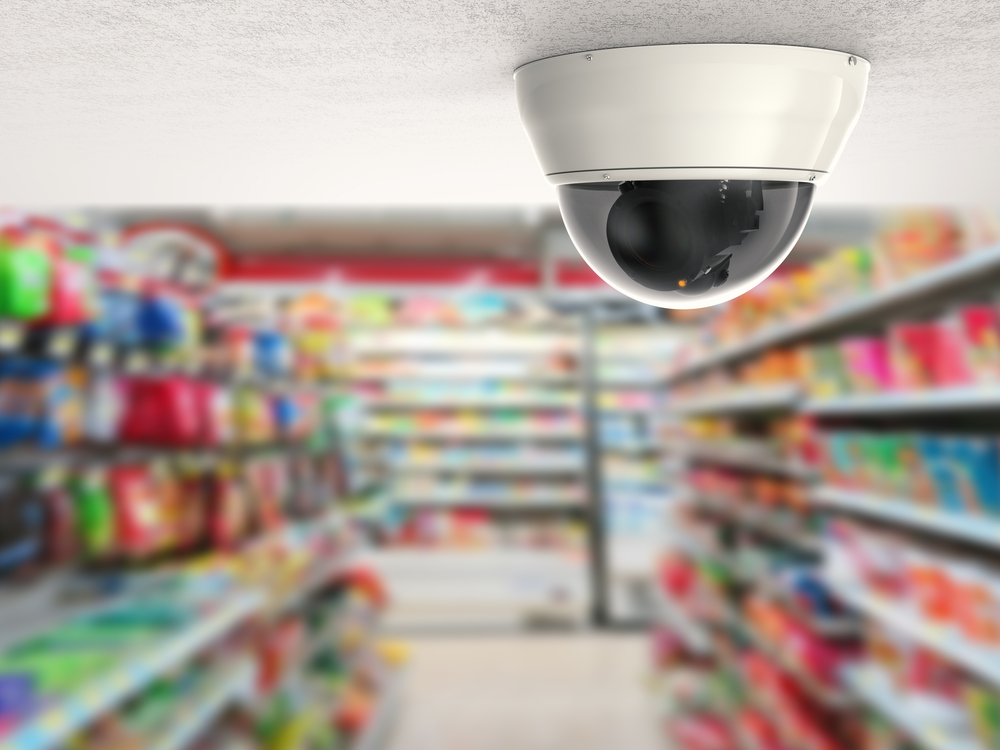Wondering how to manage your equipment more efficiently? Dive into our guide to discover strategies and specialized software solutions for optimizing equipment management in convenience store distribution.
In the bustling world of convenience store distribution, equipment plays a pivotal role. From refrigeration units ensuring product freshness to advanced tracking systems optimizing deliveries, the right equipment can make or break a distributor’s operations. However, with the myriad of tasks distributors juggle daily, equipment management can sometimes take a backseat. This guide aims to shed light on the importance of effective equipment management, offering insights and best practices tailored for industry professionals.
Understanding the Importance of Equipment Management
In the realm of wholesale distribution, especially in the convenience store sector, equipment plays a significant role. Let’s look at some of the important ways equipment management impacts various aspects of the distribution process.
The Financial Implications of Equipment Mismanagement:
Equipment isn’t just a one-time investment. From maintenance costs to potential losses from malfunctions, the financial implications of not managing equipment effectively can be substantial. For instance, a malfunctioning refrigeration unit can lead to spoiled products, translating to financial losses and damaged retailer relationships.
How Equipment Management Impacts Retailer Relationships:
Retailers rely on your distribution company for timely and quality deliveries. Both distribution, and convenience store equipment that’s not up to the mark can lead to delays, incorrect deliveries, or damaged goods. Effective equipment management ensures that retailers receive their orders in the best condition, fostering trust and long-term collaboration. By consistently meeting and exceeding retailer expectations, distributors can strengthen their market position and grow their business.
The Role of Equipment in Ensuring Regulatory Compliance:
For distributors dealing with regulated products, equipment plays a crucial role in compliance. For example, certain products might require specific storage temperatures. Equipment that can maintain and log these temperatures not only ensures product quality but also helps distributors stay compliant with industry regulations.
Equipment Lifecycle Management in Distribution
Every piece of equipment goes through various stages, from procurement to eventual decommissioning. Understanding this lifecycle is crucial for distributors to plan for replacements, upgrades, and budget accordingly. Especially when dealing with convenience products, which often have specific storage and handling requirements, the right equipment can significantly impact product quality and customer satisfaction. Let’s look at the common stages of the equipment lifecyle as it relates to c-store distribution.
Procurement and Acquisition Strategies:
Choosing the right equipment starts with understanding distribution needs, such as the volume of goods, types of products, and delivery routes. Consider future scalability to ensure the equipment can handle business growth.
Installation and Initial Setup:
Proper setup involves physical installation and software integrations, especially for tech-driven equipment, ensuring seamless integration into the distribution process.
Maintenance and Predictive Maintenance:
Regular maintenance prolongs equipment life. Predictive maintenance uses data analytics to foresee potential malfunctions, allowing for timely interventions. Establish routine check-ups, understand wear and tear signs, and train staff on basic maintenance.
Decommissioning, Replacement, and Upgrades:
Recognize when it’s time to retire equipment. Stay informed about new equipment models and consider upgrades when they offer significant benefits. Ensure responsible disposal at the end of its lifecycle.
Documentation and Equipment Tracking:
Using systems like CDR’s DAC Equipment Manager, distributors can effectively track equipment age, performance, warranty terms, and other essential metrics. This helps in planning for potential repairs, replacements, or upgrades.

Key Equipment Types in Convenience Store Distribution
Among the wide variety of equipment that is essential to convenience stores, each plays a distinct role in ensuring smooth operations and customer satisfaction. From preserving the freshness of perishable items to facilitating seamless transactions, the right equipment is the backbone of a successful convenience store. Here are some of the key equipment types that stand out:
Refrigeration Units:
Essential for perishable goods, refrigeration units ensure products remain fresh from the warehouse to the retailer. Modern units come with features like temperature logging, alert systems for malfunctions, and energy-saving modes.
Tracking and Scanning Devices:
From barcodes and QR codes to RFID tags, tracking devices help distributors monitor products throughout the supply chain. QR codes, in particular, offer a quick and efficient way to access detailed information about products and equipment with just a scan.
Transportation Equipment:
This includes not just the delivery trucks but also equipment like dollies, pallet jacks, and forklifts. Proper maintenance ensures safe and efficient movement of products within the warehouse and to retailers.
Storage Solutions:
Racking systems, shelving, and even automated storage solutions play a crucial role in optimizing warehouse space, ensuring products are easily accessible and stored under the right conditions.
Coffee Makers and Beverage Dispensers:
From standard drip coffee makers to sophisticated espresso machines, these are essential for stores offering fresh coffee. Beverage dispensers for sodas, slushies, and other drinks also fall into this category.
Hot Food Equipment:
This category encompasses equipment vital for food service within convenience stores. It includes hot dog rollers, microwave ovens, toaster ovens, and warming displays for items like pretzels or pastries.
ATM Machines:
Many convenience stores have ATM machines for customers. Convenience store suppliers and distributors may be involved in their provision and maintenance.
Ice Machines:
For stores that sell bagged ice or have fountain drink stations, ice machines are crucial. They need regular maintenance to ensure they function efficiently and hygienically.
Point of Sale (POS) Systems:
Modern POS systems do more than just process transactions. They can track sales data, manage inventory, and even offer loyalty program integrations. To ensure smooth operations, it’s essential to periodically update the software, calibrate touchscreens, and clean card swipe mechanisms. Regular backups of sales data and system configurations can also prevent potential data loss.
Security Systems:
From surveillance cameras to alarm systems, security equipment is vital for the safety of both the store’s assets and its customers. Maintenance for these systems includes regular checks to ensure cameras are functioning and positioned correctly, testing alarms, and updating security software to protect against potential threats.

Embracing Technology in Equipment Management
In today’s digital age, leveraging technology is pivotal for enhancing equipment management in convenience store distribution. From real-time monitoring to data-driven insights, technology offers tools that can significantly elevate operational efficiency.
The Rise of IoT (Internet of Things) in Equipment Management:
IoT devices, embedded in equipment, can transmit real-time data, helping distributors monitor equipment health, predict potential malfunctions, and even automate certain processes, like reordering supplies when stock levels are low.
Software Solutions for Equipment Management:
Modern distribution management systems, such as CDR’s DAC, serve as a comprehensive equipment management system, offering modules specifically tailored for equipment management. The DAC Equipment Manager, for instance, allows distributors to track the lifecycle of equipment, from procurement to decommissioning, ensuring optimal utilization and maintenance.
Integrating Equipment Data with Business Analytics:
Harnessing the data from equipment can provide valuable business insights. For example, analyzing refrigeration logs can help distributors identify patterns in product movement, optimize stock levels, and even predict retailer demand.
Training and Skill Development for Equipment Management
The best equipment can underperform if those using it aren’t adequately trained. For c-store distributors, ensuring that both their staff and the staff of the convenience stores they serve are well-trained can prevent mishandling, prolong equipment life, and ensure optimal performance.
Best Practices:
- Regular Training Sessions: Offer training whenever new equipment is introduced or when there are significant updates to existing equipment.
- Leveraging Manufacturer Resources: Many equipment manufacturers offer training resources, from manuals to hands-on workshops. Distributors should leverage these resources to ensure their team understands the equipment inside out.
- Create User Manuals: Provide easy-to-understand user manuals or guides for each equipment type.
- Offer Online Resources: Consider creating video tutorials or online training modules that users can refer to anytime.
- Encourage Feedback: Allow users to provide feedback on equipment usage and challenges. This can offer insights into areas where more training might be needed.
- Creating an In-House Equipment Expertise Team: Consider having a dedicated team or individual responsible for equipment management. This team can stay updated on the latest industry trends, ensure regular maintenance, and be the go-to resource for any equipment-related queries or issues.
Maintenance Schedules, Regular Check-ups, and Predictive Maintenance
Equipment longevity and optimal performance are directly tied to regular maintenance. For distributors, ensuring that the equipment they provide to convenience stores is consistently functioning at its best can prevent costly breakdowns and replacements. Predictive maintenance, on the other hand, uses data analytics to predict when equipment might fail, allowing for timely interventions.
Best Practices for Maintenance and Predictive Interventions:
- Set Regular Maintenance Intervals: Depending on the equipment type, set up weekly, monthly, or quarterly maintenance checks.
- Use Digital Reminders: Utilize software like DAC to set reminders for equipment maintenance, ensuring no checks are missed.
- Train Retailers: Provide guidance to convenience store staff on daily or weekly checks they can perform, such as cleaning or visual inspections.
- Keep Maintenance Logs: Document each maintenance check, noting any issues found and actions taken. This can be invaluable for warranty claims or diagnosing recurring problems.
- Use Data Analytics: Implement predictive maintenance tools that analyze equipment performance data to predict potential failures.
- Documentation: Maintain detailed records of all maintenance activities, including dates, issues addressed, and parts replaced.
- Prioritize Critical Equipment: Ensure that equipment critical to operations is given priority in maintenance schedules.

Emergency Protocols and Contingency Planning
Equipment malfunctions can happen, and when they do, swift action is crucial. Having clear protocols in place ensures that any issues are addressed promptly, minimizing disruptions. Let’s delve into the essential practices to ensure effective emergency response.
Best Practices for Emergency Response and Contingency Planning:
- 24/7 Support: Offer a helpline or support system that retailers can reach out to in case of equipment emergencies.
- Stock Essential Spare Parts: For critical equipment, keep a stock of essential spare parts to ensure quick repairs.
- Clear Reporting Protocols: Ensure that retailers know whom to contact and what information to provide when reporting an equipment issue.
- Regularly Review Protocols: As your distribution network grows and changes, regularly review and update emergency protocols to ensure they remain effective.
Cost Management and Budgeting
Effective equipment management isn’t just about ensuring functionality; it’s also about managing costs and finding ways to save money. Distributors need to strike a balance between providing top-quality equipment and staying within budgetary constraints. By optimizing equipment usage, maintenance, and procurement strategies, distributors can significantly save money in the long run. Here are some best practices for managing costs and staying within budget:
Cost Management Best Practices:
- Regular Cost Analysis: Periodically review the costs associated with each equipment type, including purchase, maintenance, and repair expenses.
- Bulk Purchasing: Consider bulk purchasing or negotiating volume discounts with manufacturers to reduce per-unit costs.
- Plan for Depreciation: Understand the depreciation rate of each equipment type and factor this into your budgeting.
- Seek Financing Options: For high-cost equipment, explore financing or leasing options to spread out expenses over time.
Practical Tech Integration & Automation in Equipment Management
Today’s equipment often comes equipped with smart features. When integrated effectively, these features, combined with advanced equipment management software, can significantly enhance operations, offering real-time insights and streamlined processes.
Best Practices:
- IoT Integration: Integrate equipment with IoT capabilities into your central management system. This allows for real-time monitoring and data collection, ensuring you’re always informed about equipment status.
- Maintenance Automation: Use tools like DAC to set automated maintenance reminders. This ensures that equipment is always maintained at optimal intervals, reducing the risk of unexpected breakdowns.
- Embrace Remote Diagnostics: Equip your team with tools that allow for remote equipment diagnostics. This can lead to faster issue identification and resolution, minimizing downtime.
- Stay Tech-Informed: Make it a habit to keep up with technological advancements in equipment management. Being informed allows you to leverage new features and functionalities as they become available, ensuring your operations remain cutting-edge.
Equipment Replacement and Upgrading
Over time, equipment may become obsolete, less efficient, or beyond repair. Knowing when to replace or upgrade equipment is crucial for maintaining operational efficiency and offering the best services to retailers.
Best Practices:
- Set Replacement Criteria: Define clear criteria for when equipment should be replaced, such as after a certain number of repair incidents or when efficiency drops below a set threshold.
- Monitor Equipment Performance: Use systems like DAC Equipment Manager to track the performance of each equipment piece, helping in making informed replacement decisions.
- Plan for Upgrades: Instead of just replacing old equipment with the same model, consider upgrading to newer models that offer better functionality or efficiency.
- Recycle Old Equipment: Ensure that old or obsolete equipment is recycled responsibly, adhering to environmental standards.
Feedback Loop and Continuous Improvement
The world of equipment management is dynamic, with new challenges and opportunities emerging regularly. Establishing a feedback loop with retailers and continuously seeking improvement can keep distributors at the forefront of the industry.
Best Practices:
- Regular Feedback Sessions: Hold periodic feedback sessions with retailers to understand their challenges and needs related to equipment.
- Implement Feedback: Act on the feedback received, making necessary adjustments to your equipment management strategies.
- Stay Updated on Industry Best Practices: Attend industry seminars, workshops, or webinars to gain insights and learn from peers.
- Encourage Innovation: Foster a culture within your organization where team members are encouraged to come up with innovative solutions to equipment management challenges.
Safety and Compliance
Safety should never be compromised. Distributors must ensure that all equipment adheres to safety standards, and staff is trained to handle equipment safely.
Best Practices:
- Regular Safety Audits: Conduct safety audits to identify potential hazards and address them proactively.
- Safety Training: Ensure that all staff members undergo safety training, especially those directly handling equipment.
- Stay Updated on Regulations: Regulatory standards can change. Stay updated on local, state, and federal safety regulations related to equipment.
- Documentation: Maintain thorough documentation of all safety checks, audits, and training sessions.

Environmental Considerations
With a growing emphasis on sustainability, distributors should consider the environmental impact of their equipment management practices.
Best Practices:
- Energy-efficient Equipment: Opt for equipment that consumes less power and is energy efficient.
- Eco-friendly Disposal: Ensure that old or damaged equipment is disposed of in an environmentally friendly manner.
- Reduce Carbon Footprint: Consider the carbon footprint when transporting equipment. Optimize routes and consolidate shipments to reduce emissions.
- Sustainable Sourcing: Whenever possible, source equipment and parts from manufacturers who follow sustainable practices.
Disaster Recovery and Backup
In the event of unforeseen disasters, having a recovery plan ensures that equipment data and management systems can be quickly restored.
Best Practices:
- Regular Backups: Ensure that all equipment data, including maintenance records and performance metrics, are backed up regularly.
- Cloud Storage: Consider using cloud storage solutions for backups, ensuring data accessibility from anywhere.
- Test Recovery Plans: Periodically test disaster recovery plans to ensure they work effectively when needed.
- Stay Updated: Ensure that backup and recovery solutions are updated regularly to accommodate new equipment and data.
Leveraging CDR Software’s DAC for Equipment Management
In the fast-paced environment of convenience store distribution, a comprehensive and specialized software solution is indispensable. CDR Software’s DAC stands out as an all-in-one ERP system tailored for candy, tobacco, and food & beverage distribution. Designed with the unique challenges of the c-store distribution industry in mind, DAC not only offers specialized modules like the Equipment Manager but also boasts seamless integration capabilities and core WMS functionality.
Features and Benefits:
- Life Cycle Tracking: DAC Equipment Manager empowers distributors to track the life cycle of equipment by serial number, ensuring a detailed and transparent audit trail.
- Product Association: The module offers the ability to associate products used by the equipment, aiding in ensuring retailers purchase the appropriate level of products.
- Real-time Monitoring: With DAC’s real-time monitoring capabilities, distributors can always stay informed about equipment status, facilitating timely interventions and maintenance.
- Seamless System Integration: DAC’s design allows for smooth integration with other systems and modules, making it a holistic solution for all distribution management needs. Its built-in WMS functionality further enhances its utility, ensuring comprehensive management capabilities.
Conclusion: The Road to Optimized Equipment Management
In the dynamic world of convenience store distribution, equipment management is a key pillar of operational efficiency. From selecting the right equipment to ensuring its longevity and optimal performance, every step is crucial for convenience store distributors. With the challenges of managing a vast array of equipment types, distributors must leverage best practices, modern technologies, and comprehensive strategies.
CDR Software’s DAC, together with our Equipment Manager module, offers a holistic solution tailored for the unique challenges of equipment management in the convenience store distribution sector. By integrating such advanced solutions and adhering to the best practices outlined in this guide, distributors can ensure that their equipment management strategies are not only effective but also drive operational excellence and profitability.
Ready to Revolutionize Your Equipment Management?
Discover how DAC and our Equipment Manager module can elevate your equipment management strategies to new heights. Experience streamlined operations, enhanced efficiency, and maximized profitability. Explore DAC Today!


